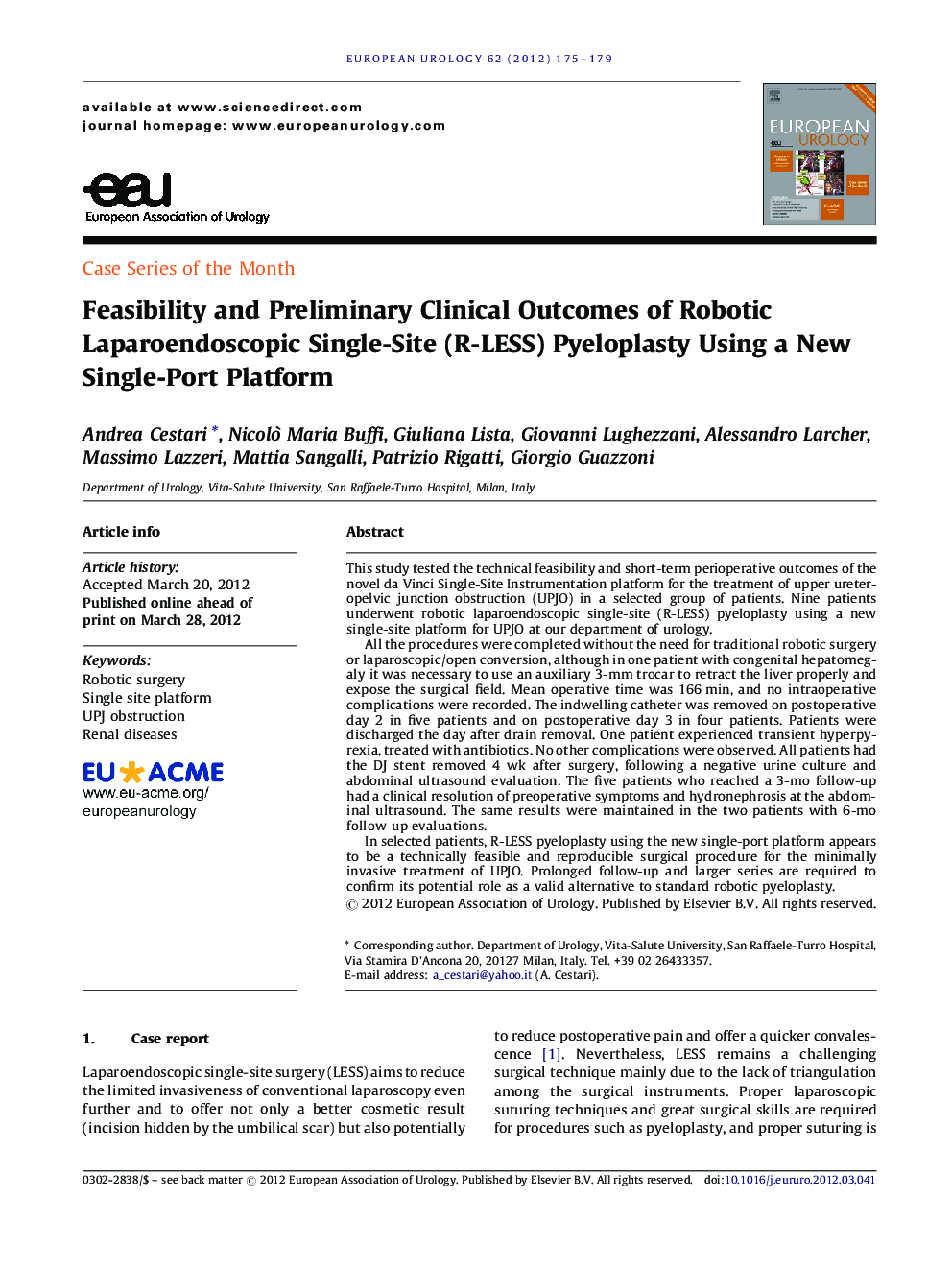| Article ID | Journal | Published Year | Pages | File Type |
|---|---|---|---|---|
| 3926693 | European Urology | 2012 | 5 Pages |
This study tested the technical feasibility and short-term perioperative outcomes of the novel da Vinci Single-Site Instrumentation platform for the treatment of upper ureteropelvic junction obstruction (UPJO) in a selected group of patients. Nine patients underwent robotic laparoendoscopic single-site (R-LESS) pyeloplasty using a new single-site platform for UPJO at our department of urology.All the procedures were completed without the need for traditional robotic surgery or laparoscopic/open conversion, although in one patient with congenital hepatomegaly it was necessary to use an auxiliary 3-mm trocar to retract the liver properly and expose the surgical field. Mean operative time was 166 min, and no intraoperative complications were recorded. The indwelling catheter was removed on postoperative day 2 in five patients and on postoperative day 3 in four patients. Patients were discharged the day after drain removal. One patient experienced transient hyperpyrexia, treated with antibiotics. No other complications were observed. All patients had the DJ stent removed 4 wk after surgery, following a negative urine culture and abdominal ultrasound evaluation. The five patients who reached a 3-mo follow-up had a clinical resolution of preoperative symptoms and hydronephrosis at the abdominal ultrasound. The same results were maintained in the two patients with 6-mo follow-up evaluations.In selected patients, R-LESS pyeloplasty using the new single-port platform appears to be a technically feasible and reproducible surgical procedure for the minimally invasive treatment of UPJO. Prolonged follow-up and larger series are required to confirm its potential role as a valid alternative to standard robotic pyeloplasty.
